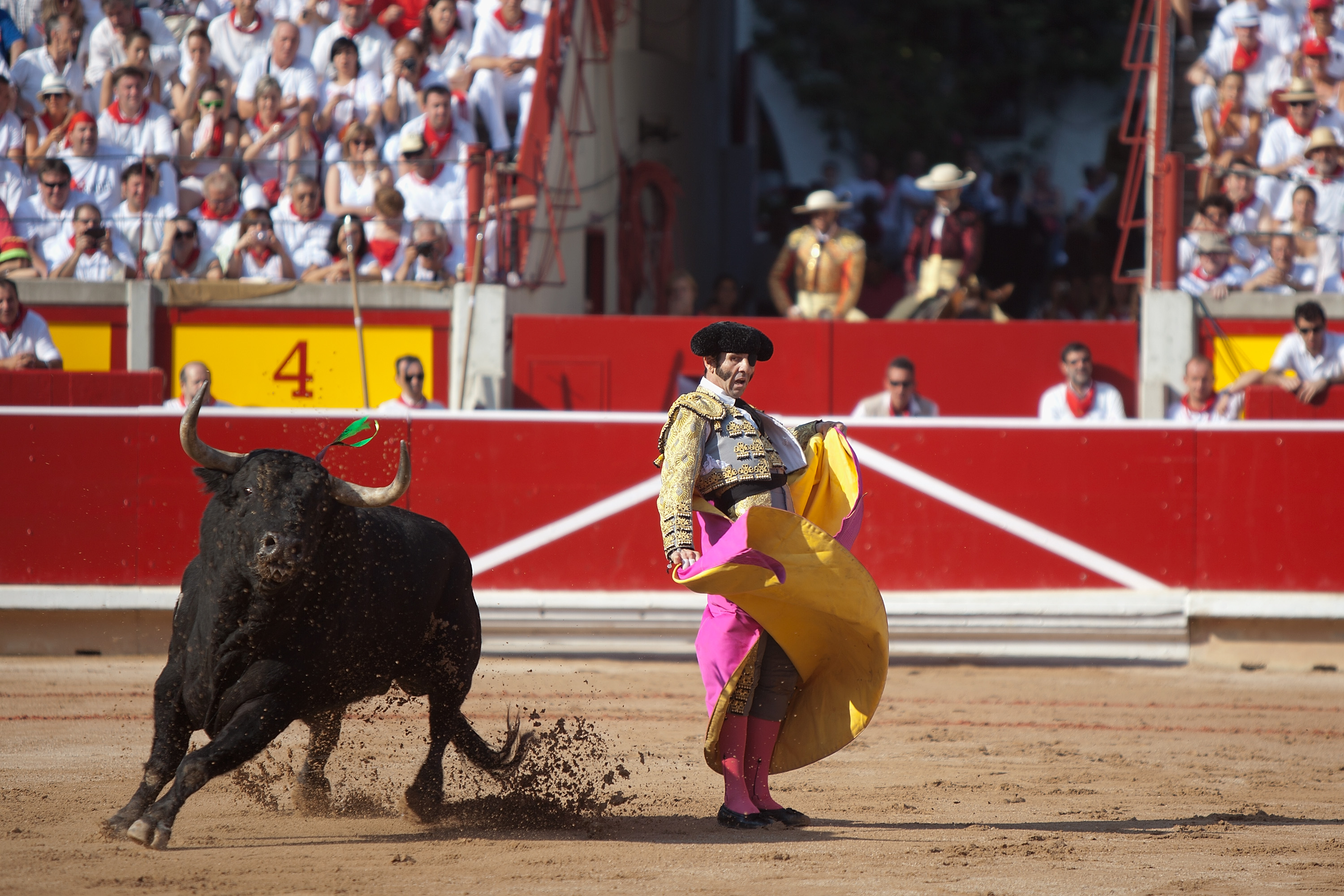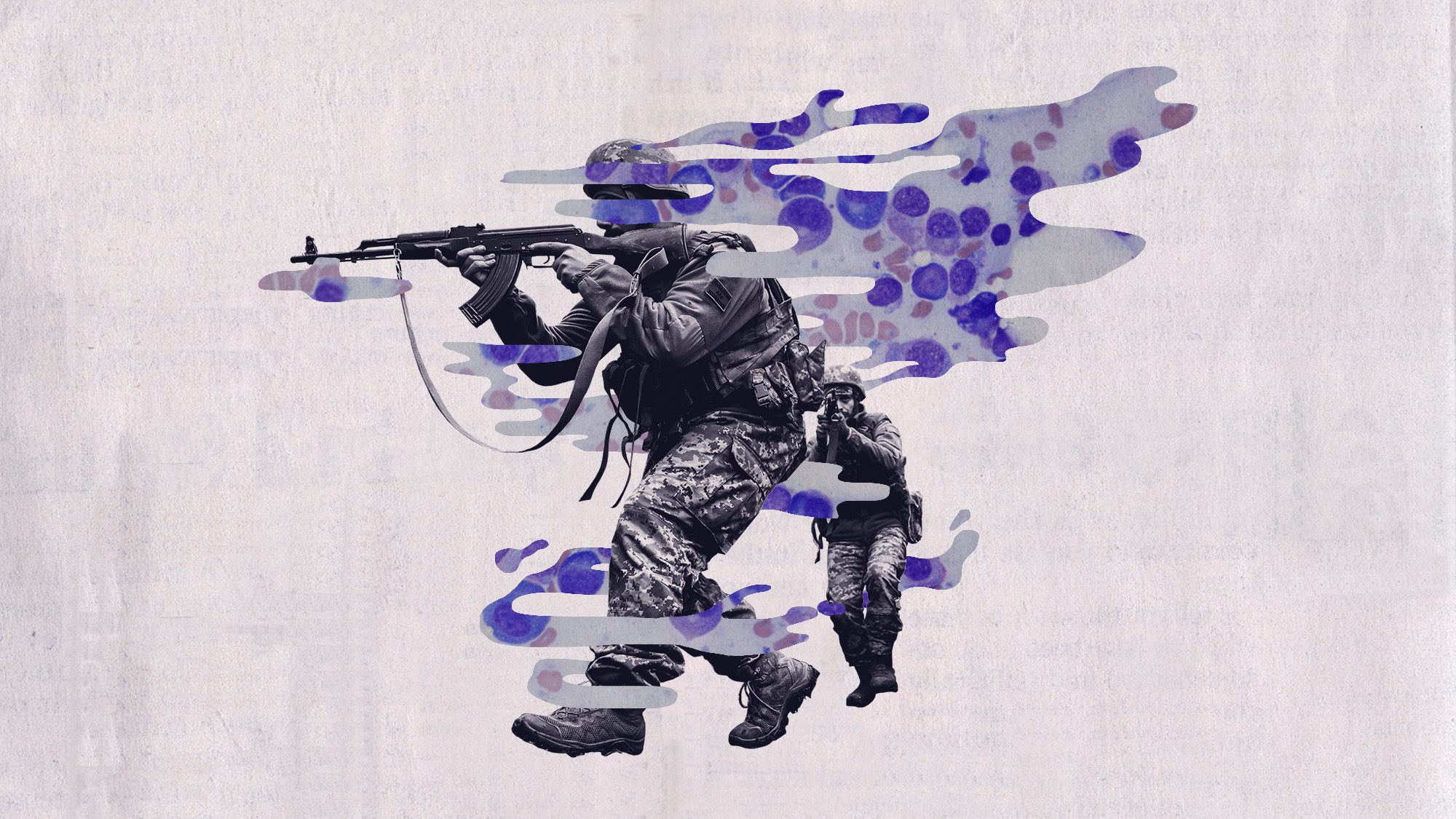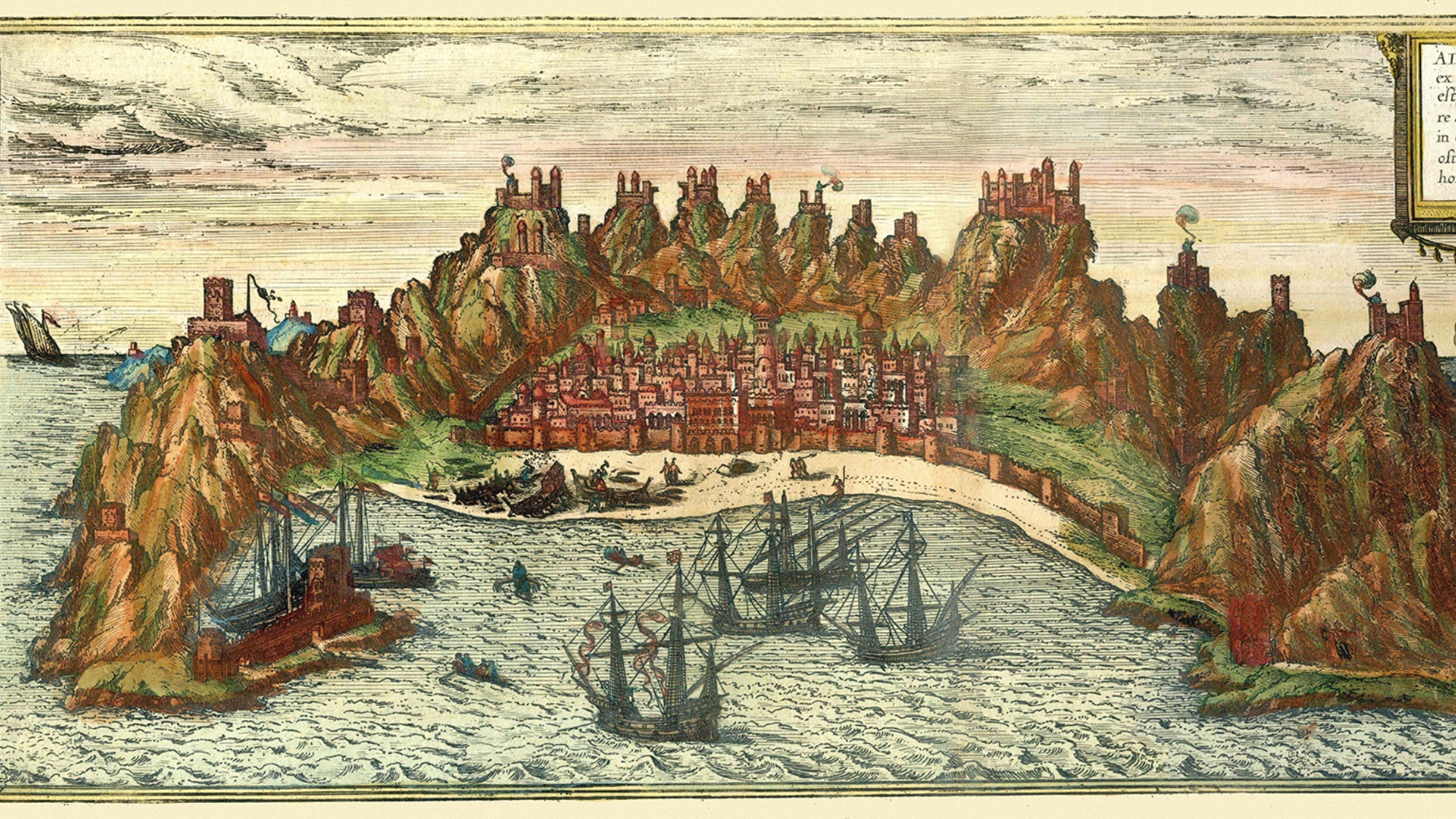Them's bullfighting words
Understanding the extraordinary language of Spain's controversial pastime

Every year right around Easter, bullfighting season, or temporada, begins in Spain.
Bullfighting, also known as tauromachy, has existed in one form or another since ancient times. The Romans held venationes, spectacles that pitted humans against animals. These "competitions" spread to Asia, Africa, and Europe, and by the time they reached medieval Spain, centered on a bull and a single fighter, usually a nobleman, on horseback. By the early 1700s, the fighter, now often a commoner, was on foot.
Today in Spain, a bullfight is known as corrida de toros, literally "running of the bulls" (not to be confused with the Running of the Bulls in Pamplona), as well as la fiesta and fiesta brava, "the wild feast."
The Week
Escape your echo chamber. Get the facts behind the news, plus analysis from multiple perspectives.

Sign up for The Week's Free Newsletters
From our morning news briefing to a weekly Good News Newsletter, get the best of The Week delivered directly to your inbox.
From our morning news briefing to a weekly Good News Newsletter, get the best of The Week delivered directly to your inbox.
A torero by any other name
While in English the word matador is used to refer to any bullfighter, in Spanish a bullfighter is only a matador — which is Spanish for "killer" — once he actually kills the bull. Until then all bullfighters are known as toreros.
In a traditional Spanish corrida, three lead toreros fight two bulls each. Each lead has a cuadrilla, or entourage, made up of two picadors, three banderilleros, and a mozo de espadas.
The picadors ride on horseback and lance or prick (in Spanish picador literally means "pricker") the bull before the lead torero fights him. Banderilleros, also known as peons, are in charge of thrusting the banderillas, or darts, into the bull's neck to further weaken it. At the end of the fight, a banderillero kills the downed bull by using a small dagger called a puntilla. Thus, this particular banderillero is known as the puntillero.
A free daily email with the biggest news stories of the day – and the best features from TheWeek.com
The mozo de espadas, or sword page, is the torero's sword handler, bringing in blades as needed throughout the fight. Mozo, which translates from Spanish as "porter," is also used in the southwestern U.S. to mean a porter or assistant.
An unofficial member of the cuadrilla are the fans, or aficionados. In English, the word aficionado also means fan or enthusiast, but the earliest definition, according to the Oxford English Dictionary, is "amateur bullfighter."
A sharp-dressed matador
One of the most appealing aspects of bullfighting might be the snazzy outfits.
Often credited with starting this tradition is Joaquín Rodríguez, an 18th century torero better known as Costillares. Despite his working class background, Costillares' "exploits in the ring found him held in the same regard as the local royals," says The Boston Globe. So, he began dressing like a royal by fancifying his jackets and adding galos de platas, silver roosters, a design apparently found on noble military badges.
By the 19th century, toreros were also wearing their hair long and tucked in a bun (when they retired, they cut off their hair, hence the saying cortar la coleta, "to cut the pigtail," which means to retire from bullfighting) and, thanks to a fighter named Francisco Mounts, had even flashier outfits.
Mounts, nicknamed Paquiro, added his own style by cropping the jacket further and wearing gold to distinguish himself from the silver-wearing picadors and banderilleros, who were also known as toreros de plata, or "bullfighters of silver." Gold beads flashing in the sun, the torero outfit became known as the traje de luces, or the "suit of lights."
He has style, he has grace
A torero's ensemble wouldn't be complete without his cape.
In the first stage of the fight, the torero and banderilleros "test the bull's ferocity" by waving a yellow and magenta cape known as a capote. In the final stage, the torero — soon to be matador — enters with a small red cape called a muleta.
A common myth is that the red of the cape angers the bull (who after lancings and darts should already be thoroughly pissed off), but bulls are colorblind. In actuality, the red might be to hide the bull's blood.
The capote and muleta take center stage in many bullfighting maneuvers. Perhaps most well-known is a move called the veronica, named for Saint Veronica. According to Catholic tradition, the saint was so affected by the sight of Jesus carrying his cross that she gave him her veil to wipe his brow. Afterward, an image of his face miraculously remained.
The maneuver, in which the torero "stands with both feet fixed in position and swings the cape slowly away from the charging bull," supposedly mimes the way that Saint Veronica held her veil.
The mariposa, or "butterfly," is a "spectacular pass" in which the cape fans out from behind. In the serpentina, the torero swirls the cape in a snake-like way. (And in case you were wondering, practicing bullfighting with no bull, as you see in the videos, is known as torero de salon, "bullfighting in the living room.")
The kikiriki, onomatopoeia for a rooster crowing, is the passing of the muleta in a figure eight in front of the bull. Another cocky maneuver is the telefono, in which the torero rests his elbow on the bull's head, as though he were talking on the telephone.
Alarde is a term for showing off in general while tremendismo refers to a "foolhardy style." Sin verguenza is a style "without shame," and soso, which translates as stupid or insipid, describes a dull performance, by either torero or bull.
It's the size of the fight in the bull — and the size of the bull
The bull's performance is almost as important as that of the torero. No one wants a weak or flojo bull, nor a meekly manso one, nor a huido, one that doesn't want to fight.
Preferred is a bull that's suave, or smooth, charging "clean and straight," or perhaps a very large bull, known as a catedral (a fitting description from a country that's 68 percent Catholic).
You know that pawing of the ground bulls do before they charge? In Spanish it's referred to as desafiar, to challenge or defy. As for a bull that's shown "exceptional bravery," it may be granted an indulto, or pardon.
Most bulls, however, aren't so lucky. Their seemingly senseless deaths have been decried by many a taurophobos, someone who's against bullfighting. (In English taurophobia refers to both fear of bulls and opposition to bullfighting.)
In 2012, bullfighting in Catalonia was banned altogether, which taurophobos call a victory but which some aficionados equate to "throwing a Picasso painting into the garbage."
Despite the ban and plummeting numbers of corridas held across the country, toreros continue to fight, and, we imagine, will continue to do so, at least until they cut the pigtail.
Angela Tung's essays on language and culture have appeared at Mental Floss, Quartz, Salon, The Week, The Weeklings, and Wordnik. Her personal essays have appeared at The Frisky, The Huffington Post, and elsewhere.
-
 Antibiotic resistance: the hidden danger on Ukraine’s frontlines
Antibiotic resistance: the hidden danger on Ukraine’s frontlinesUnder The Radar Threat is spreading beyond war zones to the ‘doorstep’ of western Europe
-
 ‘Capitalism: A Global History’ by Sven Beckert and ‘American Canto’ by Olivia Nuzzi
‘Capitalism: A Global History’ by Sven Beckert and ‘American Canto’ by Olivia NuzziFeature A consummate history of capitalism and a memoir from the journalist who fell in love with RFK Jr.
-
 Who will the new limits on student loans affect?
Who will the new limits on student loans affect?The Explainer The Trump administration is imposing new limits for federal student loans starting on July 1, 2026